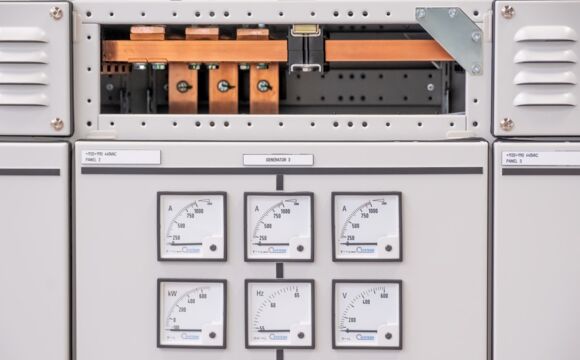
Propulsion:
more than just getting from A to B
For a cable repair ship, propulsion is about combining power with pinpoint precision
August 2025
It’s August 2025. Construction of the subsea cable repair ship – for which C-Systems is delivering the systems integration – is well underway. With the hull and superstructure taking shape, and C-Systems starting cable installation a few weeks ago, let’s take a closer look at the ship’s propulsion system.
On completion, this new vessel will be 99 metres long and have accommodation for 100 crew and technical staff. Its primary function will be to repair subsea telecommunication, data and energy cables: a task that will demand a propulsion system that is powerful, responsive and safe. It’s for this reason that the ship will be equipped with three generators that will power six thrusters with a total power of 7,870kW.
The thrusters will be used for transit from the harbour to the offshore work site as well as in Dynamic Positioning 2 (DP; DP 2 = integrated redundancy for all critical systems) mode during cable repair operations. DP will allow the ship to maintain its position precisely over the work site, a task for which it will be able to perform in specific wave heights of up to 2.5 metres. “This high degree of functionality is handled with the selection of thrusters,” says C-Systems Project Manager Jeroen Nobel. “The two stern thrusters will be azimuth: they can rotate 360 degrees and provide thrust in all directions. The two forward thrusters will be retractable azimuths: they can be pulled up inside the vessel during transit. And the two bow thrusters will be standard tunnel thrusters, providing transverse thrust.”
“It’s the starting point of everything: this is what sells the vessel.”
These six thrusters will work in unison during DP operations; the efficiency of this symbiosis is illustrated in a DP plot. “The DP plot indicates the forces the vessel can handle from a certain angle – whether that’s waves, wind, currents, or maybe a cable that is pulling on the vessel during cable-laying operations. The plot is determined by the amount of thrust that you can provide in certain directions,” explains Jeroen.
Smart electrical systems design
Looking closer at a ‘thruster fault’ scenario, in order to maintain position the steering torque on the vessel needs to be compensated by the remaining thrusters. As such, they will need a lot more power to keep the same accuracy of position. This was one of the main drivers for C-Systems selecting a closed eight busbar system rather than the conventional open two busbar system.
Jeroen explains: “During a fault in an open busbar system, you would expect to lose 50 percent of your thrusters and you ramp the other thrusters up to 100 percent. This is possible, but it would mean you have to install more generators. Therefore, because you need 50 percent of reserve power to handle a fault condition, the best generator efficiency you could achieve in normal working conditions would be 50 percent. The fuel efficiency would be horrible.”
Multiple benefits of closed busbar systems
To provide this cable repair ship with effective and powerful propulsion, C-Systems’ solution is a closed system divided over eight busbars, forming what Jeroen referred to above as the “backbone of the entire power distribution and power management philosophy”. Critically, the closed busbar system doesn’t cross the all-important WCFDI line – therefore maintaining safe operability in the event of a component failure. What’s more, this method increases generator efficiency to 80 percent in normal operations. “As such, the fuel efficiency will increase significantly, decreasing fuel costs as well as carbon dioxide emissions. And because less generators are required, the maintenance costs are lower. And, of course, there is less noise, more comfort and more space on board.”
Although the installation of closed eight busbar power distribution systems is not entirely new in the maritime sector, this technique is “fairly scarce”, says Jeroen. “However, this method is really gaining speed. Bachmann’s hardware allows us to design these systems and we are already talking about transferring the capabilities to smaller workboats. Especially with regard to the dynamic power management gains, this is the future, no doubt about it.”
